Recent months have seen a flurry of new and altered plans for developments along Friar Street, as well as construction continuing on the new Friars Walk. Let’s take a look through the progress, and the context of how this street fits within the evolving story of Reading Town Centre.
Reading, it would seem, is pre-ordained to be read left-to-right, west-to-east. Before the monks of the Abbey got to work laying out the modern lateral thoroughfares of Broad Street and Friar Street, mother nature had already carved the Thames and the Kennet rivers along the same alignment. Brunel followed suit with the railway, and others added Kings Road, Queens Road, London Road, Bath Road, Oxford Road… A town built for sideways movements, the north-south routes are always after-thoughts, and tend to be either awkward, constrained, new or even short-lived. The Thames bridges and their narrow connections throttle the town, the IDR that smashed through the terraced streets of west Reading remains controversial to this day, and the various subway/bridge combinations across the railway are constantly reconfigured. But today I’ll focus on the town centre and the routes across Friar Street.
One development proposal is for the rear portion of WH Smith. They locked the doors of their northern entrance during the pandemic and have never re-opened it. North-south links are like fleeting wormholes through Reading’s space-time, so it should perhaps be no surprise it followed the loss of the link through Littlewoods some years back, and the now boarded up Bristol & West Arcade in denying access to northerly travellers. Even our finest thoroughfare, Queen Victoria Street, was only blazed through in the early 1900s: taking pilgrims from the station to the promised land of Heelas, like a parting of the red-brick sea defying local laws of physics only thanks to perpetual scaffolding.
A developer, Thackeray, has acquired the Friar Street end of WH Smith, along with a run of buildings from Queen Victoria Street to Revolucion de Cuba. I covered their proposal for a Jury’s Inn hotel at the western end a few months back. I’d also covered their original plans for a small market square behind the Cafe Nero corner (now Black Sheep Coffee). However, those plans have now been expanded to include their portion of Smith’s and the alleyway beside the Bugle known as Fife Court (which as a north-south lane is, suitably enough, a dead end).
The previous plans showed a courtyard that included six retail units whose only frontage was into the central square. The revised plans, although occupying a slightly larger overall site, slightly shortens the central square. Moreover, all of the six units facing into the square now also have a dual Queen Victoria Street frontage. This means fewer, larger units with less dependency on the central square being a success. The apart hotel claims the western side of the courtyard for its cafe/restaurant, and it’s unclear whether access will be exclusive for hotel guests. Conforming to local doctrine, the previously proposed entry to the square from Friar Street to the north has vanished, in favour of an eastern gateway, and western access from Fife Court through the hotel.
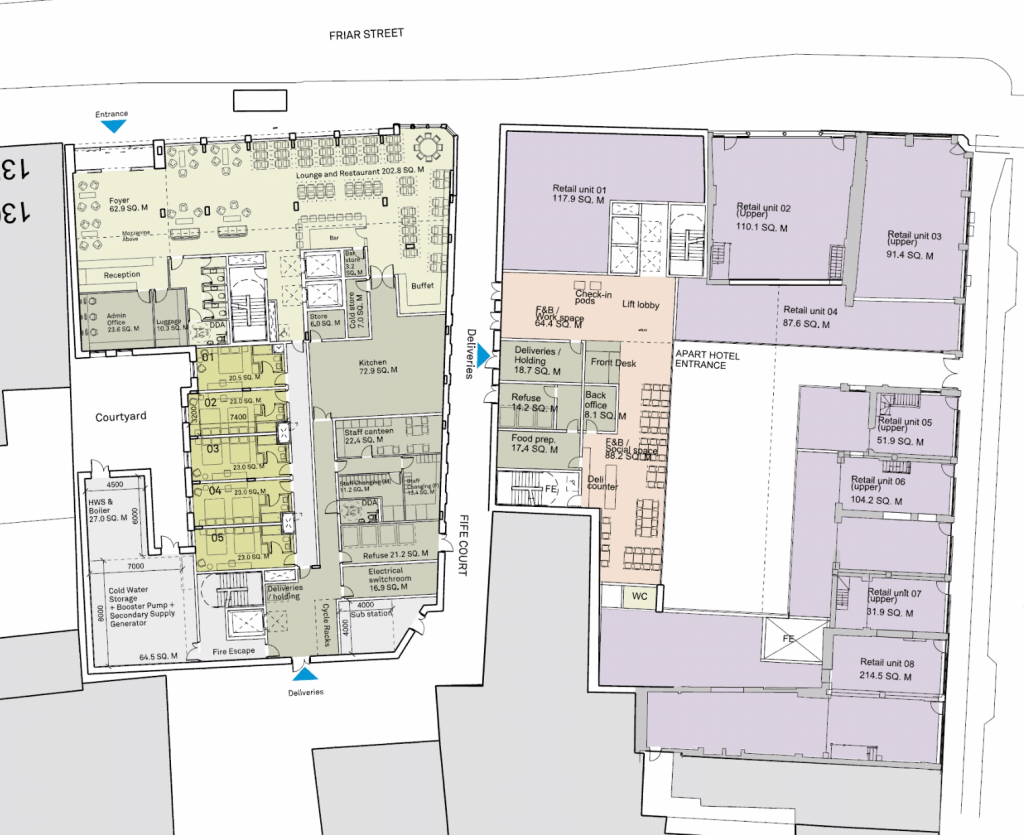
The combination of plans are positive in overall terms. The better historic buildings will be restored, including along the Friar Street frontage. It’s a shame the developer has lost confidence in the market square as a destination in its own right, but at least they retain public access and I can see it being ultimately claimed by one of the units as a large outdoor terrace/beer garden. The conquered WH Smith portion will at least be put to good use as an apart hotel – it was certainly making a negative contribution by simply offering a “No Entry” sign to its customers trying to access from the north. The Oracle should take note, having become the latest location to succumb to denying passage to southbound wanderers. They gave their original north-facing main mall entrance to Next, who’ve promptly done this:
Back on Friar Street, the loser of the Jury’s Inn tug-of-war has been the former Bristol & West Arcade. The full demolition and rebuild ideas for this site have been dropped by its new owners, Mountley Group. It’s unclear whether the revised, more modest refurbishment and extension plans will restore access through this ill-fated north-south portal. I would expect them to be compelled to do so, which would imply a reopening of the arcade to connect through to the back of Sainsbury’s. The previous full redevelopment options, initially for offices and then for a hotel, moved the through-route to the eastern side of the plot in order to maximise the space for the new-build. But now a series of new planning applications involve the conversion of the different buildings into apartments (all approved), and a live application proposes a two floor extension to the main building, which attempts to merge in with the style of the existing post-war impersonation of a Georgian building. This will all still leave a development plot behind where a pre-2008 regeneration scheme was abandoned during that recession. If construction logistics allow, expect a new application for a block of flats within that footprint. All we can hope is that some good thinking will be put into the design of a viable pedestrian thoroughfare.
At the other end of Friar Street, work continues apace on Station Hill, and particularly the Friars Walk plot where 600 apartments are under construction. The project includes a footbridge over Garrard St linking to an elevated podium to provide level access to the station. This all replaces a previous shopping arcade that had a footbridge over Garrard St linking to an elevated podium to provide level access to the station. In fairness, it’s a disservice to the new incarnation to compare it to the old: the route from the former C&A store over to the station always felt like a grubby fire exit, and when C&A closed many years ago the whole shopping mall that it anchored quickly failed. We can see the new open-air route through the site taking shape, and this time – finally – maybe we have a north-south route that will stand the test of time… although I might tread nervously the first time I cross that bridge in case we’ve angered the gods.
Conceivably that north-south route could be continued through the former Littlewoods site I referred to earlier. Or to be more up-to-date, the former Next and current Deichmann site on Broad Street, and former Jongleurs and current Popworld sites on Friar Street. The entire plot was bought recently by media-shy AEW. This mysterious fund also owns the Harris Arcade corner further up the road, as well as recently acquiring the Broad Street Mall. Joining a few dots, they have different investment funds within their ownership, with the Harris Arcade seemingly held in one where they just sit on the properties and quietly collect the rent, with the Broad Street-to-Friar Street block in a fund that is focussed on more significant investment, i.e. redevelopment. Bizarrely, they’ve actually split the Broad Street Mall into two distinct properties with the Fountain House/Biscuit Tin corner in the collect-the-rent fund, with the rest of the mall – including the parts previously earmarked for residential towers, in the redevelopment fund. AEW will have a significant say in the future shape of central Reading.
The other side of Friars Walk is also the subject of regeneration, as I previously covered following a public consultation. Those plans have now been submitted, for 100 apartments and replacement Cosmo restaurant. A couple of small retail units will front the Friars Walk alleyway, which should help that route feel more intentional vs just cutting down the side of a blank wall. The question remains as to how much of the station-to-town footfall will divert to this new axis. Whilst it will undoubtedly take some, I think Station Road will remain the predominant access from the Hauptbahnhof to the shops. As such, I wonder whether it could be improved by evicting the handful of bus stops, and converting into a single lane for non-stop buses. This could allow a wider pedestrian route on both sides, and maybe even a row of trees. The buses could use the Railair stops, if we turfed them out to the north of the station, or maybe Garrard Street could take some buses once the developments are complete?
Reading town centre’s search for a pleasant, useful and direct north-south axis that will stand the test of time continues. Wherever such a route does cross Friar Street, you’ll be met with rapidly evolving streetscape if many or all of these developments come to fruition. For a town built for moving sideways, there’s an awful lot of change in front of us.
Follow @readingonthamesIf you want to know more about Thackeray’s plans for Friar Street, Reading Civic Society is hosting an event with the developer on 2nd November – details here.
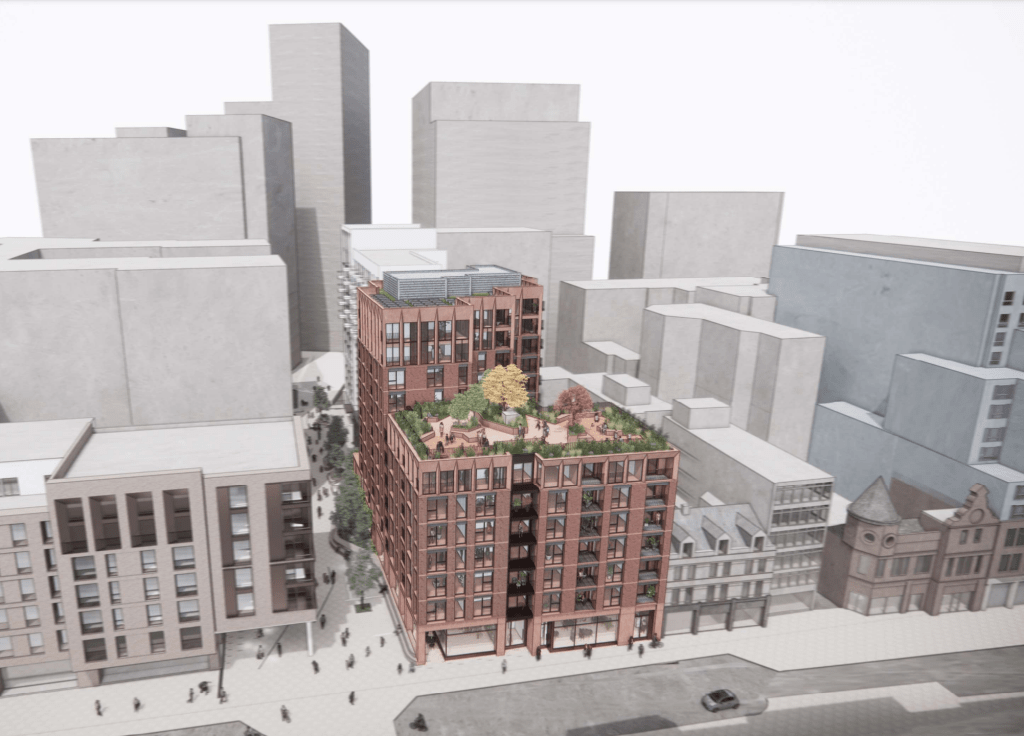



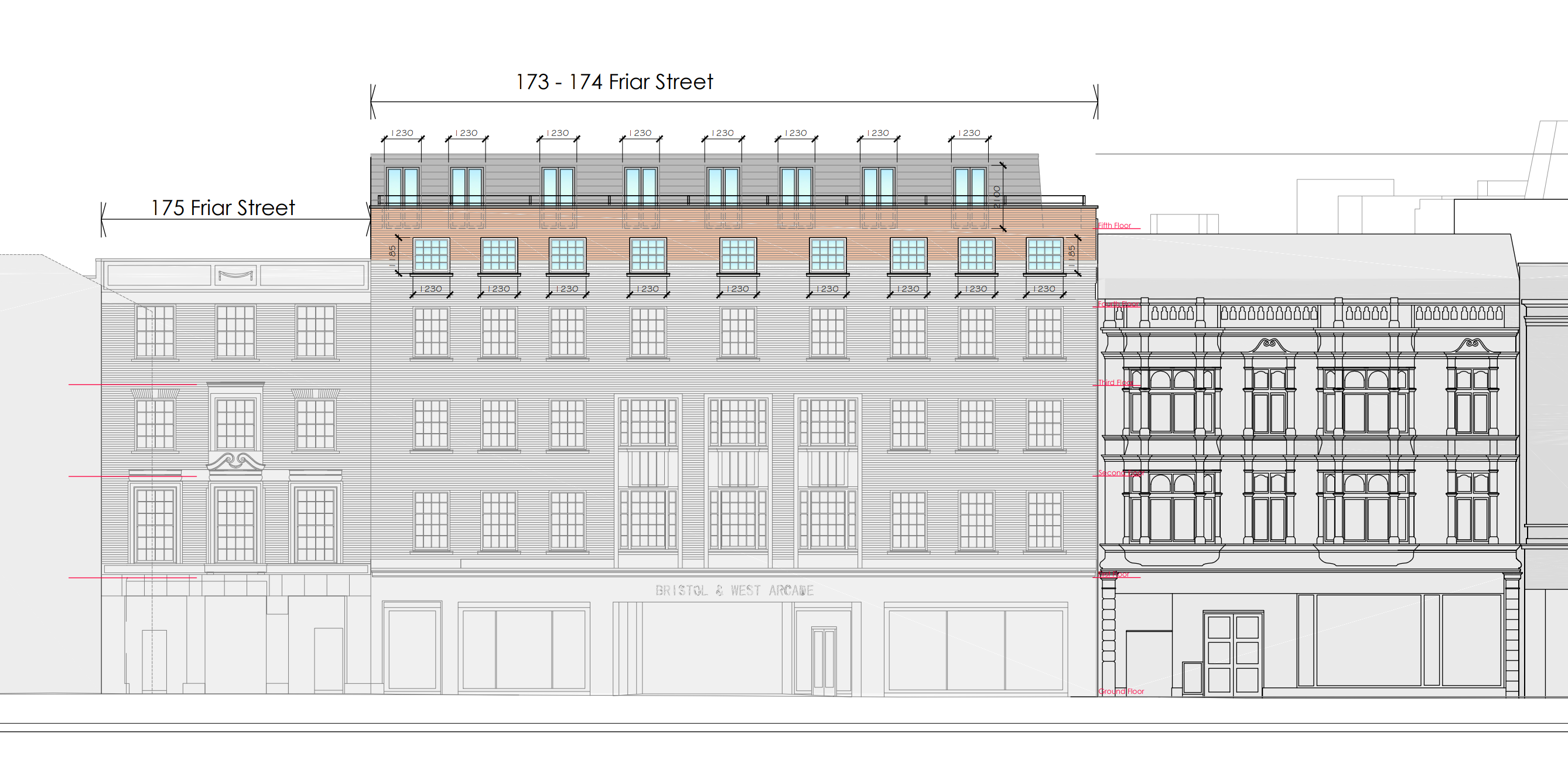
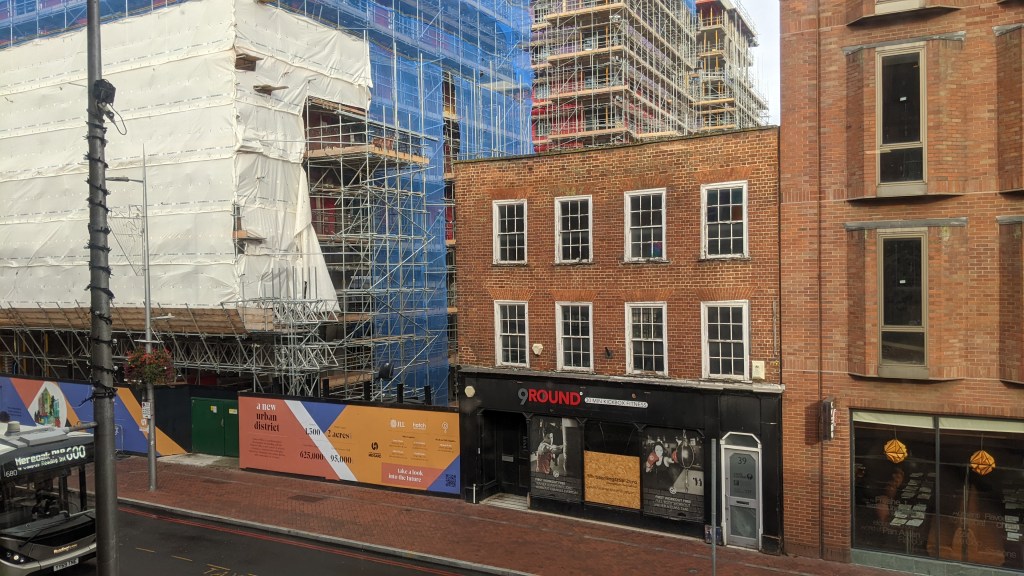

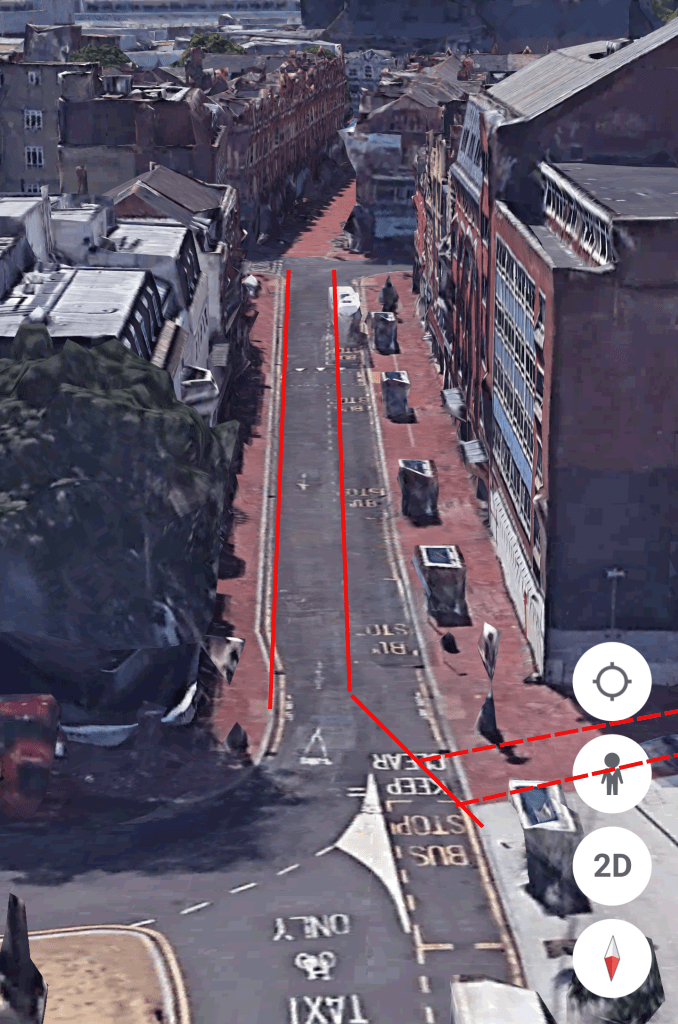
Thank heaven for “the existing post-war impersonation of a Georgian building” in Market square !
LikeLiked by 1 person